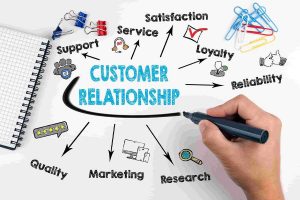Mobile payments are transactions and purchases completed using a mobile device such as smartphones, tablets, or smartwatches. Mobile payments are popular for both consumers and businesses for their convenient setup, ease of use, and security. Types of Mobile Payments & Examples The types of mobile payments are categorized by the platforms being used. Users can…
What is
What Is the Percentage of Completion Method of Accounting?
The percentage of completion method (PCM), a means of recognizing income and expenses, is the required income tax method for long-term contracts—unless the small contractor or home construction contract exceptions apply. Under PCM, only a portion of total contract income is recognized annually. When you “recognize” income, you are recording it for tax or other…
What is Inland Marine Insurance?
Inland marine insurance is a first-party small business coverage that offers protection for products, equipment, and valuable goods while they are being transported over land or stored at an off-site location. Policies for inland marine insurance differ from standard commercial property policies by covering your property while it is not at the primary listed location…
What Is a CRM System? Definition, Advantages & Examples
A customer relationship management (CRM) system is a business tool that helps organizations manage, store, and analyze lead and customer data. It helps facilitate prospecting and sales processes to improve customer relationships. Here, we explain what a CRM system is used for and why it is essential for small businesses. We also outline essential CRM…
Recruitment vs Hiring: A Small Business Guide
Recruitment and hiring are not the same thing; they are two sides of the same coin, distinct yet interrelated. The difference between recruitment vs hiring lies in their timing, scope, and purpose in the overall talent acquisition process. Recruitment is your first move—the strategic and proactive process of attracting and engaging potential candidates to build…
What Is Call Center Analytics? A Guide for Small Businesses
Call center analytics is the process of gathering and processing call data to improve agent performance and customer experience. Through artificial intelligence (AI) tools, the analysis of call center operations happens automatically, involving large volumes of data focused on different aspects of customer service, including customer sentiment, future behaviors, and the effectiveness of self-service solutions….
How Much Do Small Business Owners Make?
Based on self-reported numbers, the average US small business owner income is around $127,00 per year, or $62 per hour. That is considerably higher than the National Wage Index[1] for non-self-employed workers, which lists the average annual US wage at $63,795. However, small business owner incomes can range between $25,000 and $339,500 annually[2], based on…
7 Types of Leads in Sales
A sales lead refers to a person or company with the potential to become a customer. Every lead is unique, and converting them into loyal, paying customers requires an effective lead generation process. Learning the types of leads in sales is crucial to determine the best marketing efforts, increase conversion, and win more deals effectively….







